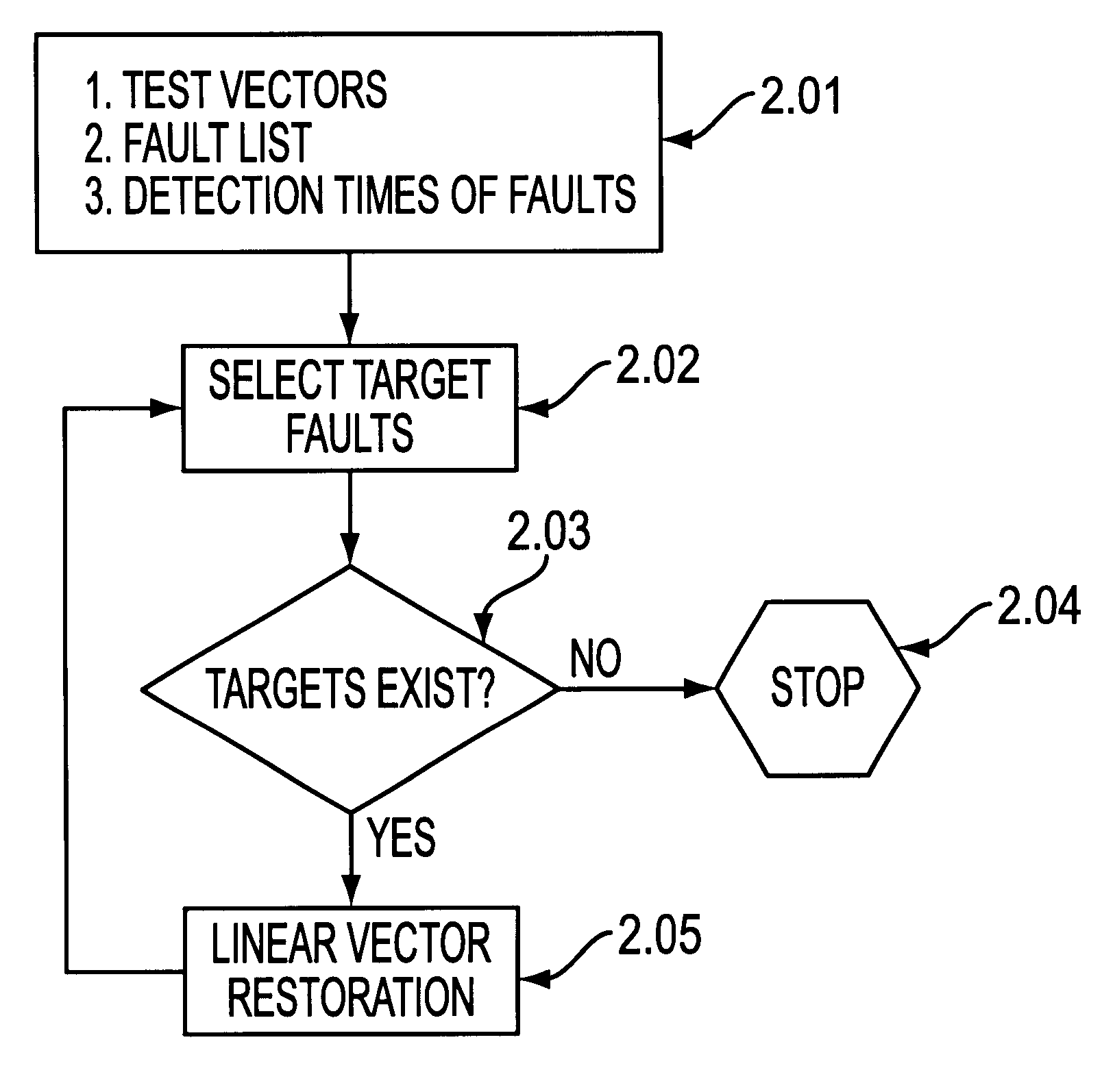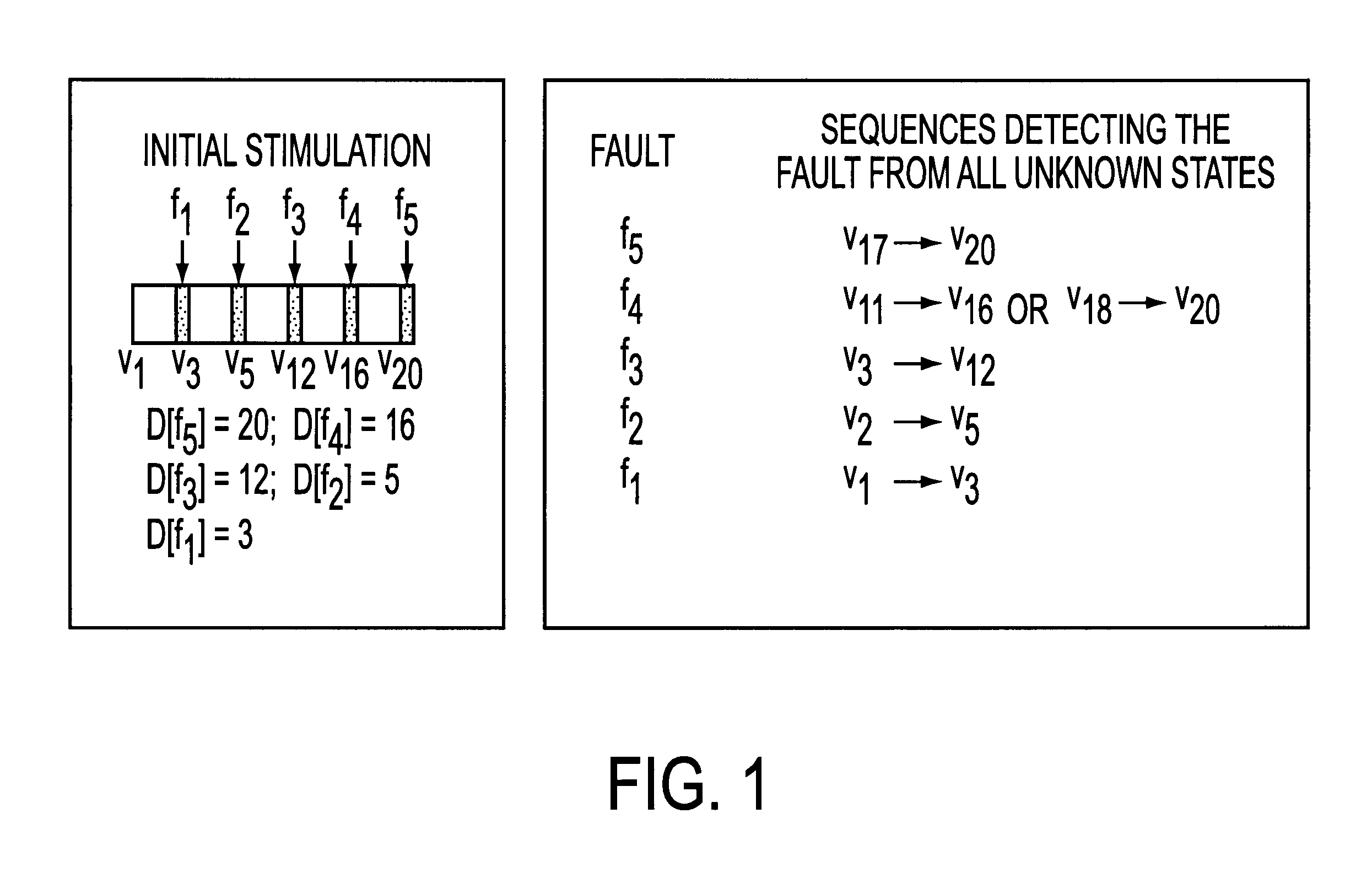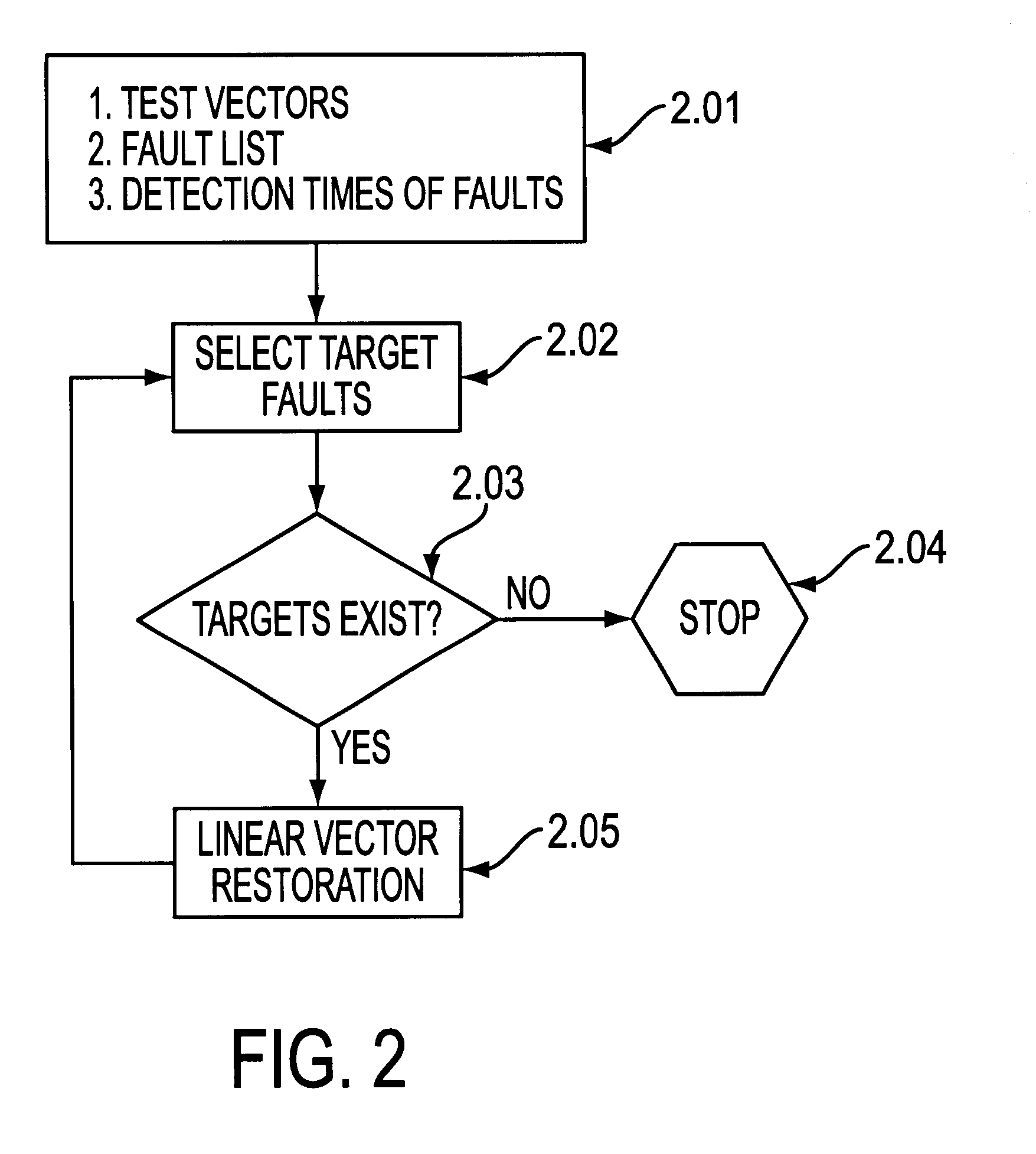Vector restoration using accelerated validation and refinement
- Summary
- Abstract
- Description
- Claims
- Application Information
AI Technical Summary
Benefits of technology
Problems solved by technology
Method used
Image
Examples
Embodiment Construction
IA. Field of the Invention
This invention relates to a method for restoring test vectors that are used to detect faults in large industrial design systems. Specifically, this invention relates to a method for restoring a minimal subsequence of vectors that detects a chosen set of faults. This invention is embodied in a method for two-step vector restoration and a method for accelerated two-step vector restoration that improve run-times of fault diagnosis for large designs.
IB. Background of the Invention
A vector is a set of inputs to a system. A test set is a set of vectors that identify faults in the system. Target fault list is a list of a subset of faults that are identified by a given test set. Given a test set, and a set of target fault list that is known to be detected by the test set, vector restoration techniques identify a minimal subsequence that detects all faults in the target fault list. See R. Guo, I. Pomeranz, and S. M. Reddy, "Procedures for static compaction of test s...
PUM
 Login to View More
Login to View More Abstract
Description
Claims
Application Information
 Login to View More
Login to View More - R&D
- Intellectual Property
- Life Sciences
- Materials
- Tech Scout
- Unparalleled Data Quality
- Higher Quality Content
- 60% Fewer Hallucinations
Browse by: Latest US Patents, China's latest patents, Technical Efficacy Thesaurus, Application Domain, Technology Topic, Popular Technical Reports.
© 2025 PatSnap. All rights reserved.Legal|Privacy policy|Modern Slavery Act Transparency Statement|Sitemap|About US| Contact US: help@patsnap.com



